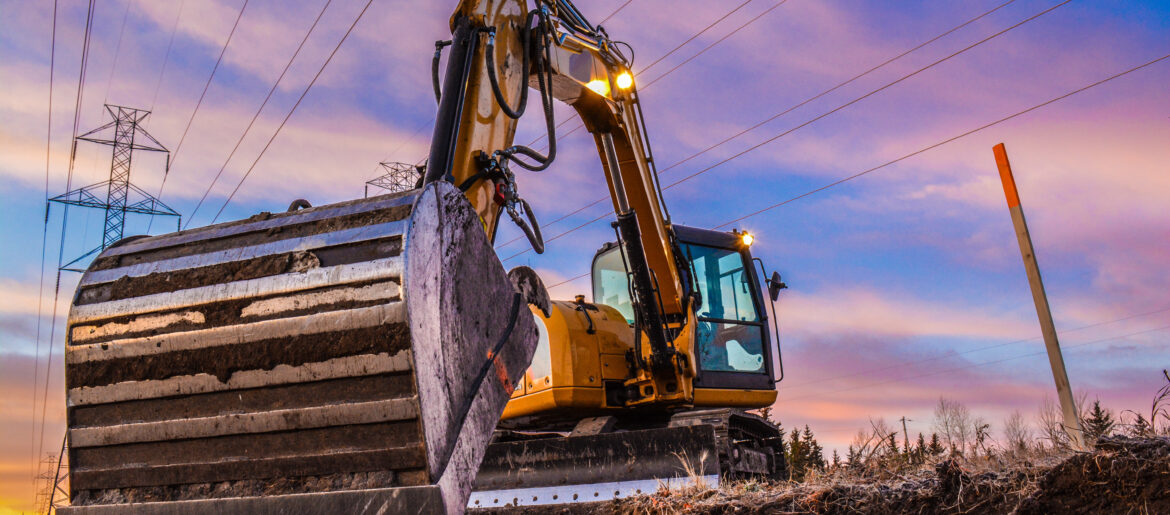
Electric Vehicles — Powering the Construction Industry of the Future
We at QuickDraw Fund Control are always excited to learn about new technologies in the construction industry. With fuel prices at all-time highs, this sure looks like a smart and green solution!
Construction machines emit approximately 400 metric tons of CO2 emissions annually, which is equal to 1.1% of all CO2 emissions worldwide. The decarbonization of the construction industry is now considered a global priority, as countries attempt to meet their Paris Agreement commitments. Some cities are considering the introduction of low emission zones where they will ban or charge for the operation of heavily polluting vehicles, which will add substantial cost to construction projects that are using diesel equipment.
Electric construction vehicles are one solution. While on-road electric vehicles are becoming commonplace, the off-road electric construction vehicle market is still in its infancy. Companies like Caterpillar, Hyundai, Komatsu, JCB and Volvo are creating prototypes and readying the market for this inevitable shift. Case in point, the Volvo Construction Equipment fleet is set for net-zero emissions by 2050. Soon, everything from backhoe and skid steer loaders to concrete mixers will be electrified.
The electrification of construction vehicles is being led by the development of small compact machines including mini-excavators, small wheel loaders and dump trucks. This is largely because such machines are used in urban environments, and many cities want to lower both exhaust emissions and noise. Since their daily duty cycle is lighter than that of larger machines, power demand can be met with a workable-sized li-ion battery and electric motor.
Volvo has already stopped development of new diesel compact wheel loaders and compact excavators in favor of models with electric powertrains. Equipment manufacturers are also working toward the electrification of larger construction machines, most of which are still in the prototype/pilot phase.
Cost, range and power availability are the key concerns as electromobility becomes mainstream. With increase in demand, EV prices are predicted to become competitive with their internal combustion engine (ICE) counterparts in the light-duty sector by 2025. Increased battery capacity in new iterations allow vehicles to travel longer on one charge. Battery degradation and range restrictions are still among the product’s primary limitations. The newest models are built to account for the degradation that happens over the course of full charge cycles and to meet or exceed ICE output while providing instant torque.
There are many benefits that come with electromobility. Electric construction equipment not only reduces emissions, it also reduces noise. Reduced noise and vibration results in safer, more comfortable working conditions for employees along with reduced fatigue and risk of hearing loss. Low noise may also allow activity on some projects to continue after hours. The elimination of exhaust pollutants means that electric vehicles may be operated indoors. This is a particular advantage for demolition projects.
Put simply, electric vehicles are superior vehicles. They come with lower maintenance and servicing costs, and are more straightforward to operate than the ICE equivalent.
Here are a few things to consider when electrifying your fleet and equipment:
- If you’re thinking of retiring an older model, it’s a good time to consider the purchase of electrified assets, especially if that old equipment is costing more to maintain than it’s worth.
- It’s important to choose the right equipment for your needs. Think ahead about features like battery capacity/range, payload, onboard power, quick charge capabilities, safety features and torque requirements.
- Along with equipment, you’ll also be investing in charging infrastructure. Consider whether you will be investing in more electrified assets in the future and how much infrastructure you will need.
- Depending on whether or not your fleet maintenance is done in-house, you may need to either certify someone to work on your electrified assets or find a third-party service provider.
In Oslo, Norway, all municipal construction sites will be required to operate emission-free vehicles by 2025. This standard will apply to all construction projects by 2030. Other cities are expected to follow suit. As a result, a number of heavy-duty electric construction vehicle prototypes are being developed and tested throughout Europe.
Although the U.S. is running behind other countries, domestic contractors will assuredly be moving toward battery-powered machines and trucks as emissions regulations increase and battery technology improves. Very soon, electric vehicles will be the norm on construction sites rather than a novelty.
QuickDraw is the go-to fund control partner for residential, commercial and industrial construction projects of every size, style and price point. From coast to coast, QuickDraw works to make the fund disbursement process a positive experience for all, with an array of related services, including: Fund Control, Site Inspections, Cost Reviews and Portfolio Management.
